LEXIQUE
UNE ÉCOLE QUI DURE
Fruit du palmier en Équateur et également appelé ivoire végétal, le corozo est utilisé pour la fabrication de boutons. Sa teinte claire d’origine se patine avec le temps pour ressembler de plus en plus à certains bois, de l’os ou de l’ivoire. Chez Kidur, toutes nos chemises disposent de boutons en corozo naturel.
Fondée en 1928 par Ryutaro Kuwamura, l’usine originellement dédiée au tissage du “banshu-ori” ferme ses portes en 1943 lors de la seconde guerre mondiale. Restaurée en 1947, elle ouvre à nouveau, équipée de 12 métiers à tisser Jacquard. Elle est désormais spécialisée dans le tissage du coton en fils teints.
Créée en 1907 à Osaka au Japon, l’entreprise de tissage Shibaya a débuté son activité en tant que fabricant de grosses toiles de coton. La maison s’est depuis spécialisée dans la fabrication de tissus destinés à la confection de vêtements de travails et d’uniformes.
Atelier de tricots japonais fondé en 1984. Spécialistes de la maille, ils allient technologie actuelle et savoir-faire traditionnel en fabriquant sur d’anciens métiers à tricoter « Tsuri ». Ils fonctionnent au ralenti pour une fabrication plus lente, qui offre une maille de caractère particulièrement douce, souple et confortable, une maille qui ne pourrait être produite sur les machines à tricoter circulaires actuelles.
Chaque tissu est caractérisé par son grammage au mètre linéaire, c’est-à-dire son poids pour chaque mètre de tissu. Les grammages vont de 90 gr/m pour un tissu fin à 800 gr/m pour un tissu très épais.
Fils préalablement teints avant d’être tissés. Les tissus conçus à partir de fils teints sont dotés d’une teinture plus résistante aux lavages et à l’usure.
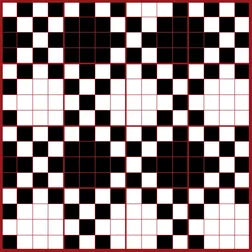
Tissu qui présente de petites alvéoles formées par le tissage
Qualités : confort, douceur, robustesse, infroissabilité, bonne absorption de l’humidité et séchage rapide.
Armure nid d’abeille.

Du Galois « glâwn » qui signifie « laine », la flanelle était originellement exclusivement composée de fibres de laine, tissées en une étoffe douce et assez lâche. Elle est de nos jours généralement composée de coton.
Qualités : douceur et chaleur grâce au grattage de sa surface, souple et peu froissable.
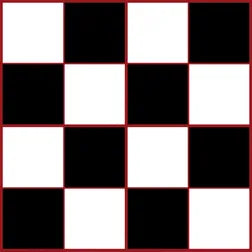
Il s’agit de l’armure la plus simple : un fil de trame passe successivement au-dessus puis en dessous d’un fil de chaîne. Il s’agit de l’une des trois armures principales avec le sergé et le satin.
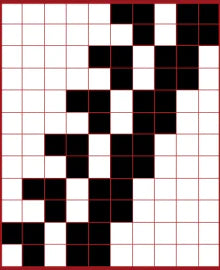
Créée en 1880 par Thomas Burberry, la gabardine est un tissu caractérisé par son tissage très serré et sa imperméabilité relative.
Il s’agit d’une armure en sergé croisé caractérisée par ses diagonales qui montent de gauche à droite. Qualités : Résistant, souple et peu froissable.
Armure toile ou sergé. Le tweed était originellement exclusivement composée de fibres de laine. Les effets de couleurs sont obtenus par un fil de plusieurs brins torsadés en différentes teintes. Qualités: Grande résistance, douce et chaude, souple et très peu froissable.
Étoffe tricotée, grattée ou non sur l’envers. Le molleton est élastique, doux et utilisé pour la confection des sweatshirts.
Créée pour le général anglais Raglan, amputé d’un bras à la bataille de Waterloo, la manche raglan est caractérisée par sa couture qui va du dessous du bras jusqu’à l’encolure. Ainsi, le vêtement est facile à enfiler et confortable à porter.
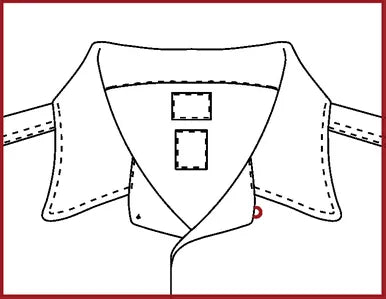
Col ouvert avec parmenture, muni d’un bouton et d’un cordon. Les chemises Camp de la Manufacture de vêtements Kidur sont toutes munies de cette petite bride permettant de fermer le haut de la chemise.
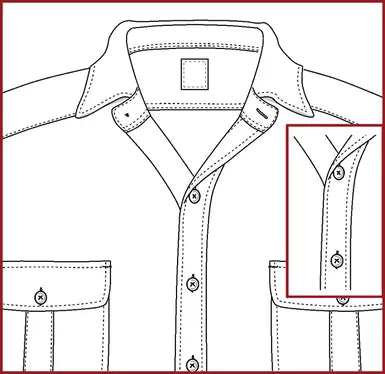
Patte de boutonnage cousue sur le milieu de la chemise. Celle-ci est particulièrement présente sur des chemises décontractées. La Manufacture de vêtements Kidur vous propose cette finition sur ses Work Shirts et Canadiennes et plus récemment la Meryl.
Un patronnage ou patron est ce qu’on pourrait appeler un gabarit représentant la forme d’un élément composant le vêtement, mis à plat. Le patron est ensuite utilisé comme gabarit pour couper le tissu. Kidur dispose de son propre bureau d’études à l’atelier, lui permettant de développer ses patronages pour concevoir ses modèles uniques.
Dessin assisté par ordinateur. Nos modélistes au bureau d’études utilisent la DAO afin de créer des dossiers techniques qui serviront de guide aux équipes de l’atelier pour confectionner les vêtements Kidur.
Conception assistée par ordinateur. Ce logiciel permet à nos modélistes du bureau d’études de concevoir les patronages.
Superposition de couches de tissus en matelas. Terme utilisé lors de la coupe des vêtements. L’opérateur matelasse des couches de tissus les unes sur les autres avant de venir couper les morceaux à l’aide des patronages.
Le denim, ou sergé de Nîmes d’où il est originaire, est un tissu de coton à armure sergé ou twill. Cette matière très dense et solide est caractérisée par un motif en diagonal. Elle était utilisée à l’époque pour confectionner des vêtements ouvriers robustes et protecteurs.
Le sergé pouvait être unis en coton ou autre matières, ou mélangeant fils de trame écru et fils de chaîne teints au bleu de gênes, ou Blue Jean puis simplement JEAN.
DENIM et JEAN sont les matières typiques de la confection des pantalons et vestes en JEAN.
Ou contraction de Self Finished Edge, est une finition typique des DENIM. Au lieu de laisser les fils de trame à la frange, le métier à tisser pose une lisière qui maintient le tissage dans sa position et l’empêche de se détendre. Cette finition est typique des DENIM denses et lourds et la couleur de fil de la lisière peut être une marque de fabrique du tisseur.
Fondée en 1938, au nord de l’italie dans la réserve naturelle de la vallée du Tessin, Candiani Denim est l'une des manufactures de denim les plus vertueuses au monde. Spécialisée dans le denim rigide et dans les denim selvedge, Candiani est la plus grande usine de Denim d’Europe.
La production durable, la circularité et le recyclage sont au cœur de l’organisation de Candiani. L’usage de technologie propre et de composants biodégradables permettent à Candiani d’utiliser beaucoup moins d’eau et de tisser des DENIM SELVEDGE éco conçus.
Il existe plusieurs façons de tisser un SERGÉ ou TWILL.
La plus courante est la RIGHT HAND TWILL ou Z TWILL, où le motif en diagonal semble remonter d’en bas à gauche vers le haut à droite. Ce tissage est un standard du DENIM, il lui assure un tissage plat et lisse et convient parfaitement aux matières lourdes et épaisses.
Souvent combiné dans le DENIM au Z TWILL, le 3X1 voit son fil de chaîne INDIGO chevaucher son fil de trame écru que tous les trois fils. Cette conception du Z TWILL est la plus robuste et se retrouve quasiment toujours dans le vêtement workwear dont les pièces en DENIM font partis.
La gradation est un agrandissement ou une diminution apporté à un patron de base pour obtenir des tailles plus petites et plus grandes.

